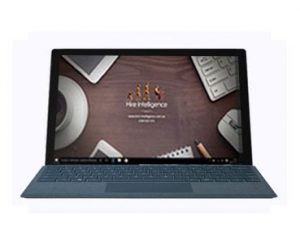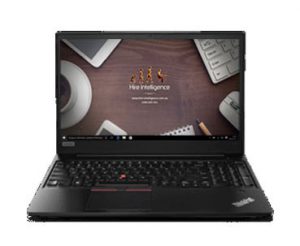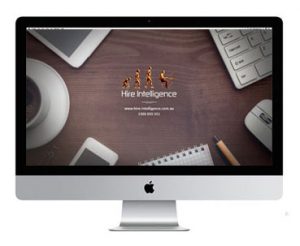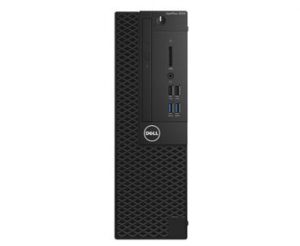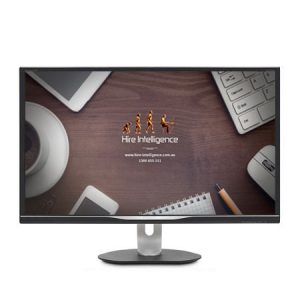In an online world, great images and photos are crucially important – and the demand for photo editing services has been steadily rising globally. Online stores, corporate businesses, and marketing agencies are just some of the organisations that might need an in-house or freelance photo editor.
Whether you do photo editing as a professional, as a side hustle, or merely dabble with it as a hobby, photo editing can be very rewarding. However, as is the case with any trade requiring a high level of skill, you need the best tools for the job.
Which is better for photo editing – a tablet, desktop, all in one computer, or a laptop?
How much RAM and storage space will you need for photo editing?
Will you need a dedicated graphics card for your photo editing?
Find the answers to all these questions and more in our step-by-step guide to choosing the best laptop or desktop for editing photos.
Laptop vs desktop for photo editing
Firstly, it’s helpful to establish which kind of device best suits your requirements, budget, and lifestyle. Let’s run through the main advantages and disadvantages of each.
Pros of laptops for photo editing
- Naturally, the primary advantage of a laptop is that it’s portable. For photographers and videographers who move around a lot, this makes it the natural choice.
- Another big plus is that you’re getting all the equipment you need in one package, as you’ve already got a built-in monitor, mouse, and keyboard.
- One final aspect to consider is the versatility of a good photo editing laptop. You can easily move it to another room to play games or stream your favourite series once you’re done working, or take it with you when you go to a client meeting.
Cons of laptops for photo editing
Of course, there are downsides too.
- Laptops are generally harder to upgrade than desktops, which means you may have to replace your photo editing laptop earlier than you would a desktop.
- If you’re looking for a lot of power, you’re also looking at a bigger price tag than you would see on a desktop with similar oomph.
Pros of desktops for photo editing
- Most of the best PCs for Photoshop and other popular photo editing apps are easy to upgrade with additional RAM, storage, and graphics cards. This usually means you’ll be able to use the same machine for longer than you would a laptop. And if you decide to experiment with new software, you know you can adapt your system to keep up.
- More power for less money. If you’re looking at high-end CPUs, you’ll generally pay a lot more for a laptop of equivalent muscle.
Cons of desktops for photo editing
- While the initial outlay may look cheaper, remember that you also need to purchase all the peripherals and a monitor, which may bring your overall cost above that of a laptop with a decent built-in screen. However, this does give you the freedom to choose any monitor you like, for example a really nice 4k display.
- You’re limited to one physical location for your work, and there are more cables to deal with.
In short, finding the best computer for photo editing hangs off where you work, how you work, what other functions you’d like the device to perform, and what your budget allows.
What about an all in one computer for photo editing?
All In One PCs, or IAO computers, combine tower and monitor – much like the very earliest home computers did! Fortunately, they’re a lot more streamlined and compact than their forebears – and this is one of the reasons you may want to consider an AIO computer for photo editing.
They take up significantly less space than a traditional workstation, so are a nice choice if you have a small apartment or want a setup in your bedroom, for instance. In an office or corporate environment, their aesthetic appeal can give the space a very professional feel.
However, there are some negatives too. They’re not as portable as laptops, and generally are less powerful than a full desktop computer in the same price range. On the plus side, they often come with interesting additional features like touch screens.
You’ll see our pick as the best all in one computer for photo editing further down the page.
Tablets versus laptops for photo editing
Tablets generally don’t provide all the functionality of a laptop or all in one PC. However, it’s important to note that there are, in fact, plenty of good tablets that can be used quite successfully for basic photo editing – and they’re getting better all the time.
The incredible Microsoft Surface Pro 7 – available with up to 16GB RAM and an i7 processor – is a prime example. Check out our review further down the page!
So, whilst we wouldn’t yet recommend a tablet as a stand-alone device if you’re a professional photo editor, adding a tablet to your creative toolset could be a savvy investment!
How to find the best desktop or laptop for editing photos
Below, we’ll run through the main specs to take into account when you’re looking for a good laptop or PC for photo editing.
Always bear in mind, however, that different photo editing programmes have their own specific system requirements. Therefore, if you have particular software that you prefer to use, always check out the developer’s recommended system requirements to prevent being disappointed.
Processor or CPU
The CPU is the brain of your laptop or desktop, and it does most of the ‘heavy lifting’ required in photo editing. We always advise opting with the best processor, with the highest number of cores, that you can afford, particularly if your work entails editing high-resolution images.
Hard Drive
The amount of hard drive space you need will be determined by the number of image files you store on your laptop. If you’re a professional photographer, for instance, you may end up with literally thousands of high-resolution photos you have to accommodate. That said, external drives for long-term storage have become very affordable, and cloud storage also offers further options.
We believe, however, that the best laptop for photographers should ideally have a solid-state drive (SSD), with at least a 2TB (2048GB) hard drive. The same applies to desktops.
RAM
The more random-access memory your machine has, the faster you’ll be able to process your photo files. The bigger your RAM, the higher the number of instructions your software will be able to handle simultaneously without lagging. We’d suggest a minimum of 8GB, ideally 16GB RAM or better, for slick and streamlined photo editing.
Operating System
As regards photo editing, your personal preference will determine whether you go with Apple macOS or Microsoft Windows. Most good photo editing software programmes are compatible with both of them.
Windows laptops tend to offer better value for money as regards power. However, if you’re a die-hard Mac loyalist, you may well feel the time you’ll need to learn a new system will negate that benefit. The final choice is entirely up to you, of course.
Screen Size and Resolution
A big, high-resolution screen is great, but remember with laptops, it will make your device less portable. So if you’re the kind of photographer who travels a lot and has to work ‘on the road’, that can become an issue.
We believe the best laptop for photographers falls in the 13 – 15-inch screen size range. This is large enough to see sufficient detail without compromising your mobility. After all, back at your permanent workspace, you always have the option of connecting your laptop to a really great monitor.
Graphics Card / GPU / VRAM
This is the requirement that is most software-specific. Adobe Lightroom, for instance, requires a dedicated 4GB of VRAM if you need to work with 4k+ images. Free programs and more basic software, like NCH PhotoPad or GIMP, can run with just the integrated graphics offered by an entry-level laptop.
However, if you’re serious about your photo editing, we suggest you go for at least 2GB of VRAM. This will enable you to successfully work on more complex scenes and images.
Ports
As a photo editor, you also have to give thought to the types and number of peripherals you use in your work, and therefore have to connect to your computer. These would include external hard drives and screens, cameras, memory cards, and input devices like your keyboard and mouse.
Adaptors can be messy, so rather try to find a laptop that has built-in ports to accommodate all your peripherals if possible. If you really need a lot of ports, it may be better to consider a desktop or AIO computer for photo editing.
Choosing the best laptop for your graphic design software
Finally, we have to emphasise that you need to ensure that the laptops or PCs you consider are fully compatible with the system requirements of your favourite photo editing programmes. To that end we have listed some examples of popular photo editing programmes and their minimum and recommended specs below:
| Software | OS | Processor | RAM | Graphics Card |
| Adobe Photoshop CC 2021 | Windows, macOS, iOS (iPad only) | Intel or AMD 64-bit, 2 GHz or faster | 8GB | 2GB |
| Adobe Photoshop Lightroom Classic | Windows 10 or later, macOS Mojave or later | Intel or AMD 64-bit, 2 GHz or faster | 8GB minimum, 16GB recommended | 2GB VRAM for standard displays,
4GB VRAM for 4k or higher |
| Affinity Photo 1.8 | Windows 10, Windows 7 SP1, Windows 8.1, macOS 10.9 to 10.14 | 64-bit | 2GB minimum | Not required |
| Luminar AI | Windows 10 (64-bit only), macOS 10.13.6 or higher | Windows: i5 or better, AMD Ryzen 5 or better
Mac: Intel Core i5 or better, Apple M1 chip |
8GB minimum, 16+GB recommended | Integrated graphics card |
| DxO PhotoLab 4 | macOS 10.14.6 (Mojave), 10.15 (Catalina) or 11.0 (Big Sur), Windows – 8.1 supported, 10 version 2004 or later recommended | Intel Core™ i7 4th generation or higher recommended | 8GB minimum, 16GB recommended | Graphics card with 512 MB of video memory for handling GPU acceleration |
For instance, a decent laptop for photoshop may have 8GB of RAM and 2GB of VRAM, while the very best laptop for editing photos may have 16GB of RAM, and 4GB of VRAM.
Our picks for the best tablet, laptop, desktop, and AIO PC for photo editing in Australia:
Best tablet for photo editing: Microsoft Surface Pro 7
Battling to decide between a tablet or laptop? With the new Surface Pro 7, you don’t have to!
- Innovative Surface Pen is great for photo retouching
- Available with a dual-core Intel i3, quad-core i5, or i7 processor to fit your power requirements and budget
- Up to 16GB RAM and 1TB storage space
- 12.3” PixelSense display with 2736 x 1824 (267 PPI) resolution
- Sync with your smartphone to access photos taken on the go
- 10-hour battery life
Best laptop for photo editing: Lenovo ThinkPad Edge E580
What makes this a good laptop for photo editing?
- Intel Core i7-8550U 1.8GHz Quad Core
- 16GB RAM, upgradeable to 32GB, making this a great laptop for Lightroom and other power-hungry photo editing applications
- AMD RX550 2GB dedicated VRAM
- 15.6″ Full HD 1920×1080 screen
Best all in one computer for photo editing: Apple iMac 27 Inch i5 with Retina 5K Display
With its incredible 27″ 5120×2880 pixel Retina 5K Integrated Display, this is without doubt one of the best all-in-one computers for photo editing and any kind of creative work.
- CPU: Intel Core i5 3.2GHz Quad Core
- RAM: 8GB 1867MHz DDR3 SDRAM (Upgradeable to a max of 32GB)
- GPU: AMD Radeon R9 M380 2GB
Best desktop for photo editing: Dell Optiplex 3050 SFF Desktop
Who says a desktop needs to take up your whole desk? This clever small form factor PC delivers great performance in a very compact package!
- Extremely good value for money
- CPU: Intel Core i7-7790 3.6GHz Quad Core
- RAM: 16GB 2133MHz DDR4 SDRAM
Looking for the best PC for Photoshop? Check out similar models in our desktop range.
Power users and top-level photo editors may wish to combine their computer with a professional monitor for detailed work. We’d suggest:
Philips 328P6VJEB 32” 4K Monitor
- Multiple ports for connecting all your devices (VGA, Dual Link DVI, Displayport, and HDMI along with four USBs)
- UHD 4K 3840×2160 pixel display
- Tilt, swivel, pivot, and height-adjustable stand
- Integrated stereo speakers and a headphone jack – get the creative juices flowing with your favourite music while you work!
Rent the best photo editing laptops, desktops and tablets from Hire Intelligence

